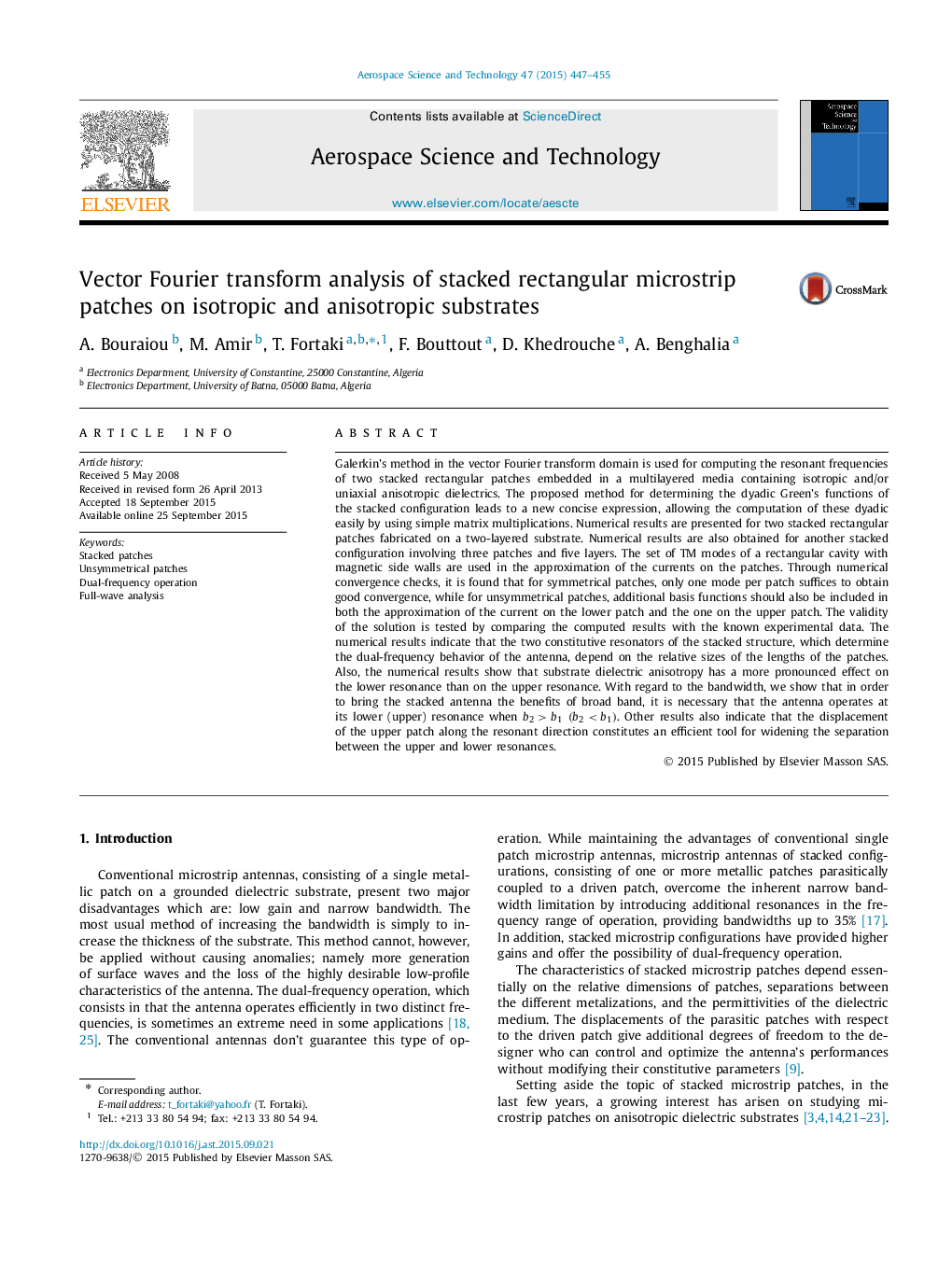| Article ID | Journal | Published Year | Pages | File Type |
|---|---|---|---|---|
| 8058779 | Aerospace Science and Technology | 2015 | 9 Pages |
Abstract
Galerkin's method in the vector Fourier transform domain is used for computing the resonant frequencies of two stacked rectangular patches embedded in a multilayered media containing isotropic and/or uniaxial anisotropic dielectrics. The proposed method for determining the dyadic Green's functions of the stacked configuration leads to a new concise expression, allowing the computation of these dyadic easily by using simple matrix multiplications. Numerical results are presented for two stacked rectangular patches fabricated on a two-layered substrate. Numerical results are also obtained for another stacked configuration involving three patches and five layers. The set of TM modes of a rectangular cavity with magnetic side walls are used in the approximation of the currents on the patches. Through numerical convergence checks, it is found that for symmetrical patches, only one mode per patch suffices to obtain good convergence, while for unsymmetrical patches, additional basis functions should also be included in both the approximation of the current on the lower patch and the one on the upper patch. The validity of the solution is tested by comparing the computed results with the known experimental data. The numerical results indicate that the two constitutive resonators of the stacked structure, which determine the dual-frequency behavior of the antenna, depend on the relative sizes of the lengths of the patches. Also, the numerical results show that substrate dielectric anisotropy has a more pronounced effect on the lower resonance than on the upper resonance. With regard to the bandwidth, we show that in order to bring the stacked antenna the benefits of broad band, it is necessary that the antenna operates at its lower (upper) resonance when b2>b1(b2
Keywords
Related Topics
Physical Sciences and Engineering
Engineering
Aerospace Engineering
Authors
A. Bouraiou, M. Amir, T. Fortaki, F. Bouttout, D. Khedrouche, A. Benghalia,
